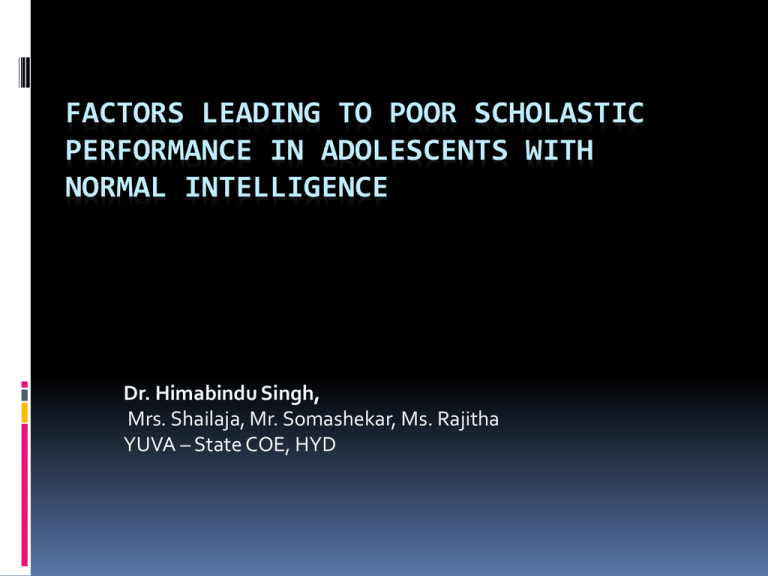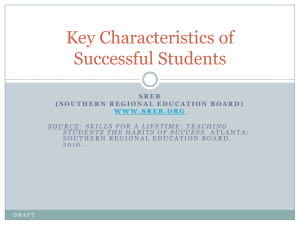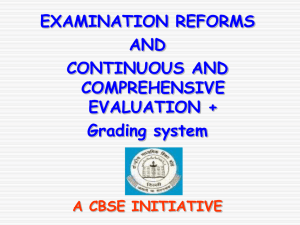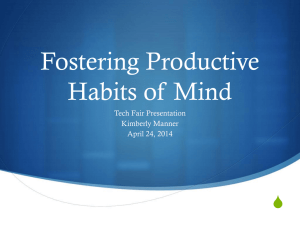dr. himabindu singh 1
advertisement

FACTORS LEADING TO POOR SCHOLASTIC PERFORMANCE IN ADOLESCENTS WITH NORMAL INTELLIGENCE Dr. Himabindu Singh, Mrs. Shailaja, Mr. Somashekar, Ms. Rajitha YUVA – State COE, HYD INTRODUCTION Scholastic performance is extremely important in Adolescent’s life. Poor scholastic performance (PSP) can lead to poor self-esteem, increased risk of dropping out, bullying, emotional disturbances etc., Many factors at the level of the adolescents, education environment and family effects scholastic performance even with normal intelligence. Definition: Study habits are defined “as the regular tendencies and practices that one depicts during the process of gaining information through learning. Personal Factors School Factors Family Factors •Chronic illness, •Intellectual or cognitive disability, • Behavioral/ developmental disorders, •Mental health issues such as depression or anxiety, •History of abuse and neglect, •Poor self-concept or self-esteem, • Poor communication skills, •Poor social skills, •Difficulty with listening, concentrating or sitting still. •Being bullied • Disliking, or not feeling connected to the school culture or environment, •Disliking school subjects, • Poor school or academic support, especially in relation to heavy workloads, •Not getting along with teachers or other students at school, •Skipping school because of any of the reasons listed above, • Competing demands on time, such as extracurricular activities. •Parents who aren’t involved in their child’s education • Home environment that doesn’t or can’t adequately support a young person’s learning • Family problems such as relationship breakdowns Competing family or social responsibilities, such as caring for family members, or working outside school hours. There is paucity of epidemiological studies in India to determine the exact prevalence and the causes of scholastic backwardness specially regarding study habits. This study aims to identify and analyze factors that affect Scholastic performance among adolescents normal/ average intelligence. with YUVA State COE on Adolescent Health, HYD Aim of the study To evaluate the medical, psychological and social factors effecting Poor Scholastic Performance in Adolescents. Duration of the study: One year Study site: Yuva- State centre of excellence on Adolescent health Study design: Cross sectional observational study Inclusion criteria: Adolescent students between 10years to 18 years male and female, rural and urban reporting to Yuva with medical and psychological problems With Average and above average intelligence With significant reduced Scholastic performance (40% and below) Exclusion criteria With chronic mental health illness With below average intelligence Below 10 years and above 18 years Material & Methods Sampling Method: Purposive sampling. 2706 clients registered at YUVA in that period were screened by Pediatrician for medical problems and on HEADDSS criteria and later by Psychologist who assessed IQ. About 120 Adolescents both male and female from rural and urban areas with significant reduced scholastic performance and average intelligence were included in the study. Methodology The Adolescents who registered at Yuva were taken concern to participate in research activity, later socio demographic data was collected . The Adolescents were screened on HEADDS criteria by Pediatrician. Psychologist administered test of Intelligence (BKT) & for social maturity levels VSMS was administered. To identify social dependency of the client. The parents were interviewed & the data regarding study habits was gathered. Finally Screening tool was administered to identify reasons leading to Poor Scholastic Performance. The collected data was analyzed statistically Senior pediatrician dealing with Adolescent along with Medical officer and staff nurse Psychologist dealing with Adolescent Tools Used: Consent form Socio Demographic Data Performa HEADDSS criteria screening tool Binet kamat Test of Intelligence Vineland Social Maturity Scale Screening Tool Performance for reasons related to Poor Scholastic Observation & Results Table-1 shows the details of the variables in parentages S.No. Variables Total % 1. Age 10-12 13-15 16-18 50 54 16 41.6% 45% 13.3% Gender Male Female 67 53 55.8% 44.1% 3 50 67 2.5% 41.6% 55.8% 54 66 45% 55% 2. 3. 4. Socioeconomic Status High Medium Low Malnutrition Yes No S.No. 5. 6. 7. 8. 9. Variables Chronic Illness Yes No Poor Study Habits Yes No Behavioural Problems Yes No Medium Change Yes No TV Viewing Yes No Total % 23 97 19.1% 80.9% 104 16 86.7% 13.3% 59 61 49.2% 50.8% 50 70 41.7% 58.3% 66 54 55% 45% Table 1 shows that low socio economic status, poor study habits and excessive TV viewing is significantly effecting reduce in scholastic performance. Analysis & Discussions Figure -1-INCIDENCE OF PSP IN RELATION TO AGE and GENDER 35 33 30 28 25 20 Male Female 15 10 6 5 0 10-12Yrs 13-15Yrs 16-18Yrs Analysis & Discussions Figure -2 - the effect of SOCIO ECONOMIC STATUS on Malnutrition 40 35 30 25 Malnutrition Present 20 Malnutrition Absent 15 10 5 0 High Middle Low Figure-2 shows that low socio economic status high in malnutrition than in middle socio economic status Most of the experts argue that the low socioeconomic status has negative effect on the academic performance of students (Adams, 1996). Analysis & Discussions FIGURE-3 - PSP RELATION TO STUDY HABITS IN MALE AND FEMALE ADOLESCENTS 80 70 60 50 Good Study Habits 40 Poor Study Habits 30 20 10 0 Gender Male Female Figure -3 shows that an analysis indicates that when compare to females males are significant in reduced academic performance. The descriptive data reveals that males spend most of the time excessive watching TV, play station, browsing internet leading to reduced academic performance. Analysis & Discussions Figure -4 SHOWS various factors EFFECTING PSP 90 80 70 60 50 Poor Study habits Present 40 Absent 30 20 10 0 Chronic Illness Behavioural Problems TV Viewing Medium Change Malnutrition Figure- 4 shows that chronic illness is not significantly affecting reduce academic performance. Howard Taras., et al., 2005. SES Vs Malnutrition Association between SES and malnutrition state of the respondents Chi-Square test value : 13.714 at 2 Degrees of Freedom ; the p-value is 0.001 This value clearly indicates that there is an association between SES and malnutrition state of the respondents CONCLUSION • Poor study habits such as studying only before exams and not having any daily schedules for study patterns. •Excessive TV viewing more than 2 hours per day are significantly affecting reduce performance in academics. •It was found that Malnutrition and Medium change is stressful and may cause either temporary or long-term problems with academic performance. •The home environment also affects the academic performance of students. Educated parents can provide such an environment that suits best for academic success of their children. RECOMMENDATIONS To develop effective study habits and include in the curriculum. Self regulatory and self monitoring techniques to be provided for students to improve Academic performance. To involve students in recreational activities especially with physical involvement to divert the students from excessive watching TV and using play station. The school authorities can provide counseling and guidance to parents for creating positive home environment for improvement in student’s quality of work. THANK YOU






